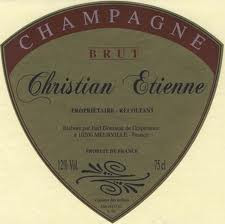The Cellar: 4 Great Sparkling Wines for New Year’s Eve
Friday, December 28, 2012
At the most recent ‘Evening with Wine’ event at the Providence Wine Academy participants received a lesson in sparkling winemaking and tasted a series of delicious examples meant to provide inspiration for their New Years Eve wine shopping. During the tasting participants sampled bubbles from Northern Italy, Champagne and New Mexico. Here are some of the evening’s highlights:
2011 Moscato d'Asti
The first offering was a real palate igniter featuring the aromatically enticing $15 2011 Moscato d’Asti from famed producer Saracco. Moscato d’Astis are low alcohol, slightly sparkling and semi-sweet wines
made from the Moscato Bianco grape. While it is believed that the grape originates from Greece, it is the winemakers in and around the village of Asti (located in Italy’s Piedmont region) that has made the grape famous. After de-stemming, crushing and pressing the grapes, the sugar-rich juice is then fermented in sealed, pressurized stainless steel tanks. Because the tanks are sealed, the carbon dioxide (which alongside alcohol is the byproduct of fermentation) has nowhere to go, and as a result, gets infused into the wine thus creating the bubbles. Once the alcohol level reaches 5% - 6% the fermentation is stopped leaving behind a wine that is slightly sparkling and has a lot of natural residual sugar. While not everyone’s cup of tea, this wine’s sweet honey, apricot and peach flavors did win over the majority.Prosecco
As a contrast to the first wine, the second tasting featured the dry and fully sparkling Prosecco from Adami. Proseccos start their lives as high-acid, low alcohol still wines made from the Glera grape. They get their bubbles by undergoing a process called ‘Charmat’, also known as the ‘Metodo Italiano’. During this process the base wine, which has already seen one fermentation, is poured into pressurized steel tanks to undergo a second fermentation. Because the tanks are sealed the two byproducts (alcohol and carbon dioxide) are captured, raising the alcohol level of the wine and giving it its bubbles. Fully sparkling (aka Spumante) Proseccos are often dry, while slightly sparkling (aka Frizzante) Proseccos are often a little lower in alcohol with some residual sugar. Adami has been making some of the best Spumantes in Valdobbiadene for almost 100 years. This is a great value at around $15.
GET THE LATEST BREAKING NEWS HERE -- SIGN UP FOR GOLOCAL FREE DAILY EBLASTThe Battle of the Bubbles
The final tasting pinned two sparkling wines, both made the traditional method, against each other in a head-to-head comparative tasting. When making wine in accordance to the traditional method, also known as the Champagne Method or Methode Champeneoise, the second fermentation must take place inside the bottle, as opposed to in a tank. After the second fermentation the wine is left to age on the dead yeast cells. It is the interaction between the wine and the dead yeast cells which give traditionally made sparkling wines their much sought-after yeasty and biscuity aromas and flavors, as well as smoother mouthfeel and more intense bubbles. This tasting, which saw Christian Etienne’s $40 Brut Champagne go against Gilbert Gruet’s $20 Rose from his New Mexico Estate, was conducted blind. While both wines pleased the crowd it was the Champagne that won, praised for its creaminess, length and more concentrated bubbles.
Happy New Year!
Steffen Rasch, CSW, is ready to answer any wine-related questions, comments or concerns you may have. Feel free to email him at [email protected]. And as always, don’t forget to follow GoLocalProv’s Wine Cellar on Facebook and sign up for one of his tastings through the Providence Wine Academy.
Related Articles
- The Cellar: Zinfandel + Chardonnay
- The Cellar: 3 Finds From The ‘New’ Campus Fine Wines
- The Cellar: Chianti + More
- The Cellar: Field Blends
- The Cellar: Red Wines To Serve on Christmas
- The Cellar: Wines That Get Better With Time





